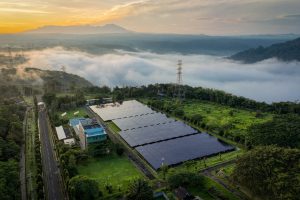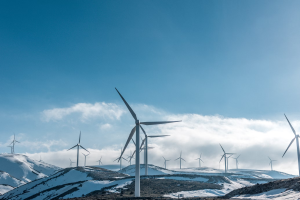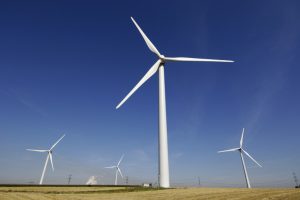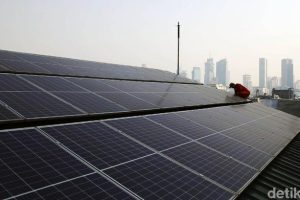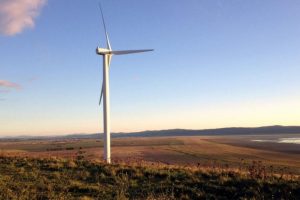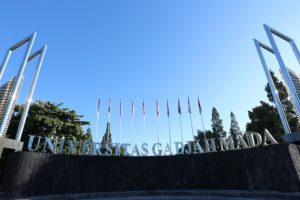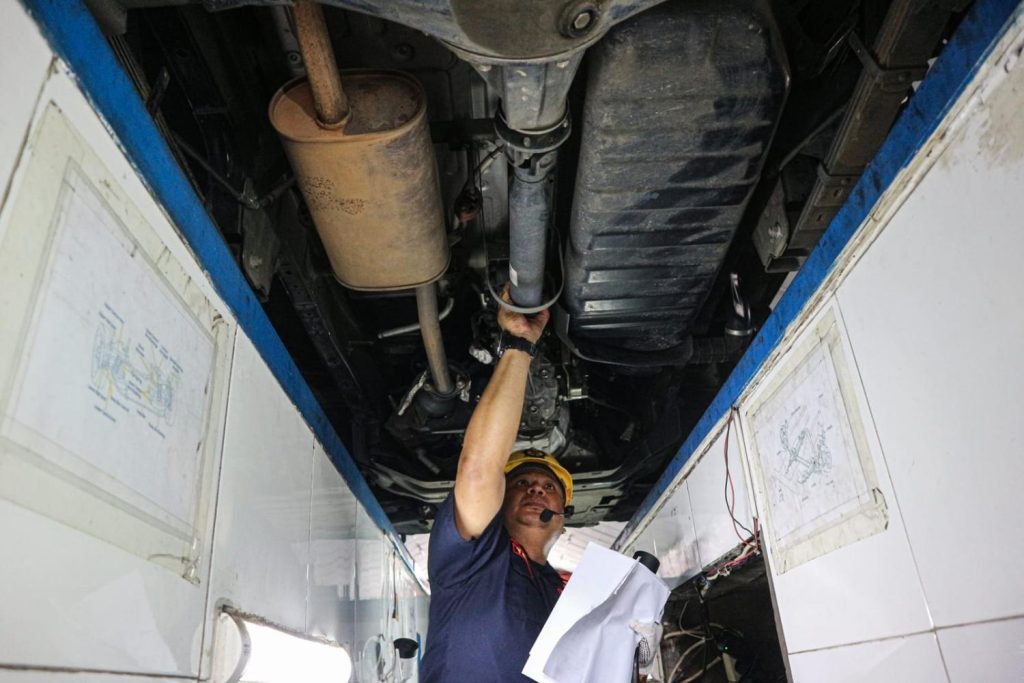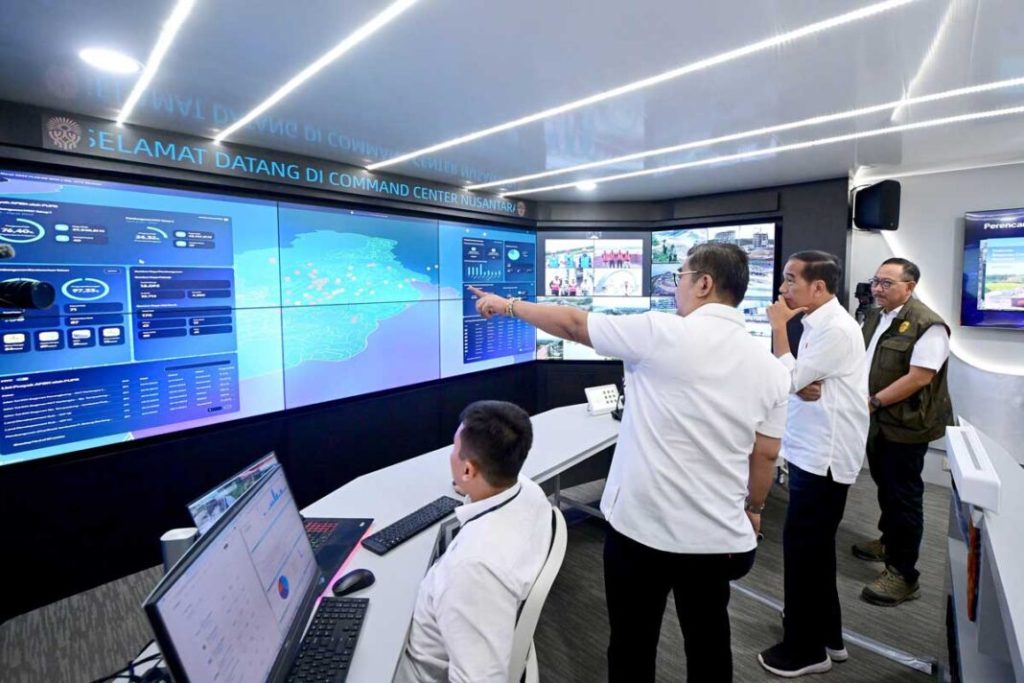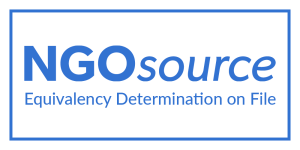Discussion about nuclear power for energy supply is a debatable topic among various societies in Indonesia, of which there are agreements as well as disagreements. The supporting argument is that it is time for Indonesia to use nuclear power because fossil energy sources are limited. Moreover, energy consumption increases every year in line with population growth rates, population welfare, rural-urban development, and technological progress. The Ministry of Energy and Mineral Resources recorded that the energy consumption in 2017 is 1.23 billion Barrels Oil Equivalent (BOE), or 9% greater than the previous year (Figure 1).
Figure 1. Final Energy Consumption by Type (PYC Data Center, 2019)
On the contrary,Indonesia’s location that is vulnerable to natural disasters, especially earthquakes and tsunami make people disagree to the idea of using nuclear power. A disaster where tsunami wave follows earthquake is a key consideration for the nuclear power safety, reflecting on the energy accident “The Fukushima Daiichi Nuclear disaster”, that occurred on 11 March 2011, in, Tohoku, Japan. Similar as Japan, Indonesia often experiences earthquakes because it is located at the ring of fire, and has also been affected by tsunami several times.The difference is that Japan has a better disaster mitigation program than Indonesia, including disaster management for nuclear power and they have experienced, reliable, and disciplined human resources to manage nuclear power plant. This catastrophic event made people worry about the continuity of nuclear power reactors if they are built in Indonesia.
Environmental and Technological Issues in the World
Environmental issues also affect public acceptance for nuclear power. Radioactive waste from the nuclear power plant is very dangerous and it is classified as a toxic chemical for all living things. World accident history recorded that the large nuclear power plant explosion came from a nuclear reactor on April 26, 1986 at the Chernobyl nuclear power plant in the Soviet Union. The disaster gave a message that the environmental impact of radioactive particles is truly serious. Based on data and information from the International Atomic Energy Agency (IAEA), about 60% of radioactive material falls in the Belarusian region. Hundreds of thousands of residents near the nuclear reactor in Pripyat, Northern Ukraine, must be evacuated. Estimates of nuclear experts, this nuclear power disaster has more than 100 atomic bombs dropped by the United States on Nagasaki and Hiroshima, Japan in 1945. Hence, the long-term impact is that the Chernobyl region is still inaccessible to date and the area of 2,600 km2 is still isolated and off-limit.
Meanwhile, the nuclear power plant technology has been evolving towards modernity. The issue of nuclear reactor technology is also one of the considerations of public acceptance. Nuclear reactors are currently divided into 5 types based on the generation of technology (Figure 2), such as:
- Generation I reactor: Trial phase of nuclear power, prototypes, research reactor and non-commercial power producing reactor. Prototype and power reactors example: Shippingport (1957 – 1982) in Pennsylvania, Dresden-1 (1960-1978) in Illinois, and Calder Hall-1 (1956-2003) in the United Kingdom.
- Generation II reactor: Latest nuclear power plant 1965 – 1996, generation II reactors include the PWR, CANDU, BWR (Fukushima nuclear power plant), AGR, VVER and RBMK (Chernobyl nuclear power plant). Its design had an original design life of 30 – 40 years. Generation II refers to a class of commercial reactors design. These nuclear reactors typically referred to as light water reactors (LWRs), still using traditional active safety features that involve electrical operation.
- Generation III reactor: An evolution of the Generation II reactor with state-of-the-art design improvements. Fuel, technology, thermal efficiency, modularized construction and safety systems are continuing to be equipped and refined. Especially, the use of passive rather than active systems, reactor engine automation, and standardized design. It aims for more extended operating period, usually 60 years of operation, potentially exceeding 60 years of lifetime (Existing designs 1996 – present).
- Generation III+ reactor: Generation III+ is a development from generation III. Manufactures began research of reactor systems in 1990s by building on the operating experience of the US, Japanese, and European Union. Most significant improvement is the incorporation of some designs of passive safety features that do not require active controls or operator intervention, but instead rely on gravity or natural convection to mitigate the impact of abnormal events.
- Generation IV reactor: Generation IV is still under development. The improvement aims to create a highly economical, safe, and proliferation resistant reactor, in addition to reduce the waste produced.
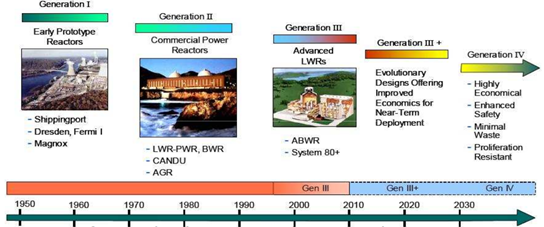
Figure 2. Generation of Nuclear Reactors in the world (Gabriel Farkas, 2010)
As the nuclear reactor technology keeps developing, many countries in the world today are not worried to use nuclear power to support energy security, especially for electricity. Based on World Nuclear Association data, in 2017, around 11% of the world’s electricity supply was generated by 450 nuclear power reactors. It supplied 2,487 TWh of electricity in the world, higher than 2016 (2477 TWh) (Figure 3).
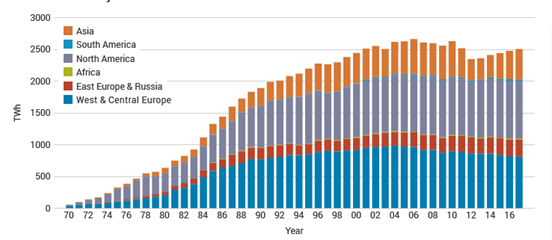
Figure 3. Nuclear Electricity Production (IAEA, 2018)
US becomes the largest country in the world using nuclear power with an electricity capacity of 98,384 MW. France is ranked second with an electricity capacity of 63,130 MW. Meanwhile, China follows in the third with an electricity capacity of 42,858 MW. The fourth and fifth position are occupied by Japan with an electricity capacity of 35,947 MW and Russia with an electricity capacity of 28,355 MW (Figure 4).
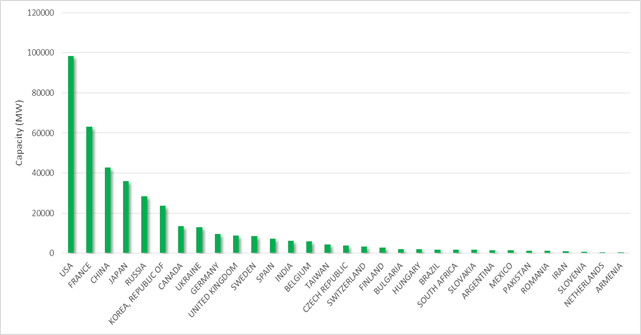
Figure 4. Electricity Capacity from Nuclear Power in the World (IAEA, 2018)
Indonesia Condition
In Indonesia, development of nuclear utilization activities began in 1958, in the era of President Soekarno. Through the Government Regulation No. 65 of 1958, the Atomic Energy Council and the Atomic Energy Institute were formed. Later on, they became the National Atomic Energy Agency (BATAN), based on Law No. 31 of 1964 concerning Basic Provisions of Atomic Energy. Also, at the moment, Indonesia actually has a regulation on nuclear use, namely Law Number 10 of 1997 concerning Nuclear Power.
At present, Indonesia has three nuclear reactors that are not used to support energy security. Management and operation are only used for research and production of isotope for agricultural, cosmetics, and health purposes. The first nuclear reactor in Indonesia is Triga Mark II, built based on the initiation of Indonesia’s first President Soekarno. This reactor is located near the campus of Bandung Institute of Technology and operated in 1964 with a capacity of 2000 kW (upgraded in 2000 from a capacity of 250 kW to 2000 kW). The second nuclear reactor in Indonesia is the Kartini reactor, operated in Yogyakarta since 1979 with the capacity of around 100 kW. The third one is Serpong reactor, built in 1987 in Serpong, Tangerang, Banten with a capacity up to 30 MW. It is located in the BATAN office complex.
In 2006, Minister of Energy and Mineral Resources, Purnomo Yusgiantoro, announced that Indonesia has a plan to build a nuclear power plant to meet the soaring demand for energy. Mohammad ElBaradei, Director General of the International Atomic Energy Agency (IAEA), was invited to Indonesia in December 2006 to see the development plan. There are three sites that were considered for the nuclear power plant development in Indonesia. The sites are; Banten, Bangka Island, and Muria in Jepara Regency, Central Java. The locations are on the north shores, away from the tectonic subduction zone. Then, BATAN conducted preliminary surveys and researches. A year later, in 2007, there was a rejection of nuclear power development in grassroots communities and NGOs, especially in the area of Mount Muria, Jepara Regency, Central Java.
However, the larger development to support electricity have not yet been implemented. The development of nuclear power for electricity generation is the last option. This is in accordance with the 2014 Presidential Regulation concerning National Energy Policy, Article 11 Paragraph 3, which states the Nuclear Power Plant as the last choice. The government has reasons according to these regulations, the use of nuclear must pay attention to safety factors strictly, because of the high risk and can threaten public safety.
In 2016, BATAN conducted a national survey on public acceptance of nuclear science and technology. The result was that 77.53% of the Indonesia’s population expressed support and agreed to the construction of a nuclear power plant. The remaining 22.47% of the Indonesia’s population disagreed and rejected the existence of nuclear power plants. This survey was conducted by taking a sample of 4000 people, spreading across 34 provinces in Indonesia, using statistical methods. For respondents rejecting the existence of nuclear power, there were several reasons: (1) worry of the reactor accidents, (2) radioactive pollution, (3) Indonesian human resources are less prepared, (4) nuclear weapons manufacturing, (5) nuclear power plant construction costs are very expensive, and (6) new and renewable energy besides nuclear has not been maximized.
In public policy science, there is an understanding that good public acceptance supported by good regulation will accelerate the implementation. This has not happened in Indonesia regarding the nuclear policies and public acceptance. This certainly inhibits the development of nuclear power to support Indonesia’s energy security. There will always be a debate in all societies that: “Nuclear go or no go”. If Indonesia wants to advance about nuclear, then all the elements of the nation must be supportive. The government as the policymaker must issue regulations that encourage the construction of nuclear plants. The legislative institution as the people’s representative must also support the idea. And the public must also think that nuclear is to support energy security, safe for the environment and not for weapons.
Reference
Amir, Sulfikar. (2010). Nuclear Revival in Post-Suharto Indonesia. Asian Survey. University of California.
BATAN. (2017). Survey Jejak Pendapat IPTEK Nuklir Tahun 2016. Pusat Diseminasi dan Kemitraan BATAN. Tangerang.
Farkas, Gabriel. (2010). From Gen I to Gen II. Slovak University of Technology in Bratislavia. Bratislavia.
Goldberg, Stephen M and Rosner, Robert. (2011). Nuclear Reactors: Generation to Generation. American Academy of Arts and Sciences. USA.
Undang-Undang Republik Indonesia Nomor 10 tahun 1997 tentang Ketenaganukliran.
https://www.iaea.org/newscenter/focus/chernobyl
https://datacenter-pyc.org/data/statistics/energy-consumption/final-energy-consumption/
https://en.wikipedia.org/wiki/Nuclear_reactor
https://pris.iaea.org/PRIS/WorldStatistics/OperationalReactorsByCountry.aspx
Disclaimer: This opinion piece is the author(s) own and does not necessarily represent opinions of the Purnomo Yusgiantoro Center (PYC).
